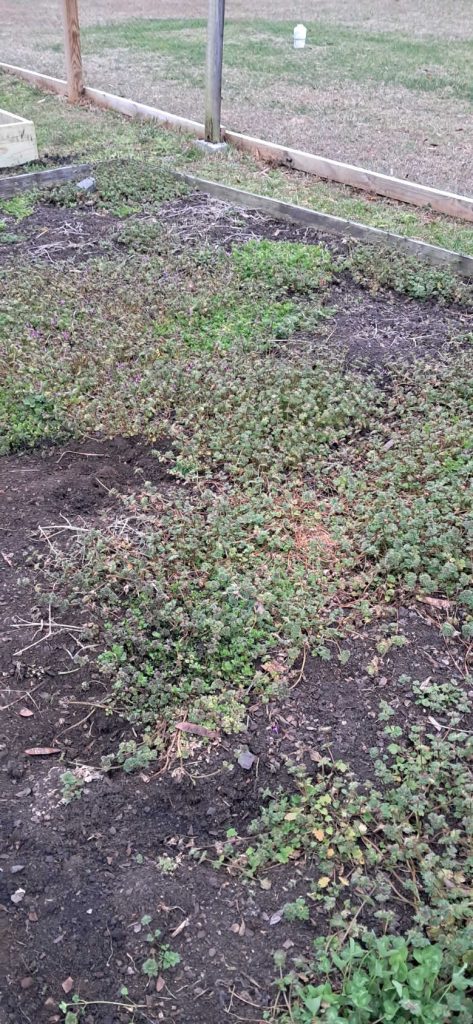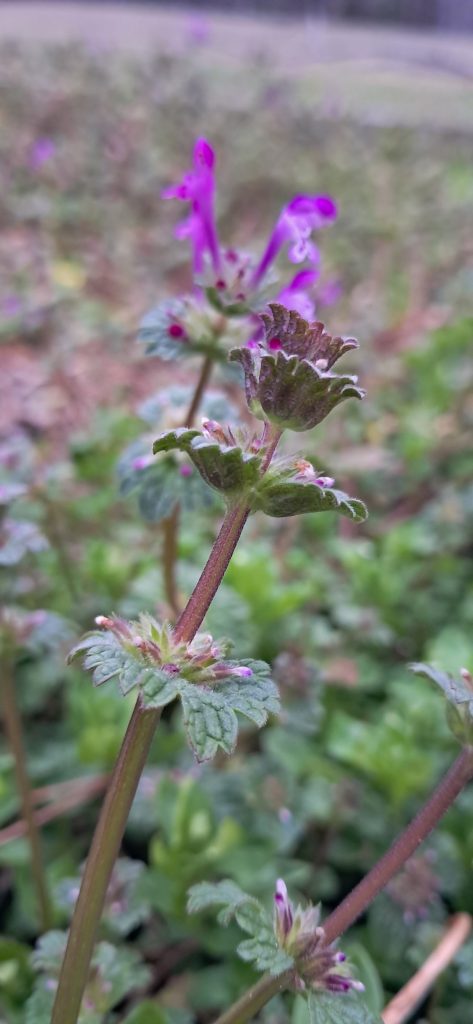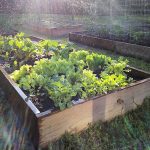I’ve put together this henbit plant profile to spotlight a lovely plant – which many gardeners consider a weed. Weed or flower? To me, it’s a matter of perspective.
Every spring, at least one of my raised beds is covered in a thick mat of henbit. Henbit is both lovely and practical despite being labeled as a weed. Bees, newly emerging from their winter torpor inside the hive, find a ready source of nectar in henbit. I prefer to compost henbit or turn it over directly into the soil using it like a winter cover crop. Whatever your choice, you can either leave this weed alone or pull it up – it will die back as soon as the weather turns warm. Like chickweed, it thrives in cool weather and dies back in the hot seasons.

Henbit (Lamium amplexicaule) Plant Profile
Common Name: Henbit
Scientific Name: Lamium amplexicaule
Family: Lamiaceae (Mint family)
Native Range: Europe, Asia, and North Africa, but widely naturalized around the world, including in North America.
Description
Henbit is a small, herbaceous annual plant known for its delicate, purple-pink flowers and distinctive leaves. It typically grows to a height of 4–12 inches. The stems are square-shaped (a hallmark of the mint family) and can be slightly hairy. The leaves are rounded with scalloped edges and attach directly to the stem, giving a “clasping” appearance.
Flowers: The tubular flowers bloom in clusters and are usually bright lavender or purple with darker markings. Henbit flowers attract pollinators like bees and butterflies, making it a beneficial plant for gardens.
Growing Conditions
Henbit is a cool-season weed that thrives in a variety of environments, including lawns, gardens, and agricultural fields. It prefers:
- Full sun to partial shade
- Well-drained soils (but it’s adaptable to different soil types)
- Moist conditions, though it can tolerate some drought
Ecological Role: Henbit plays an essential role in early spring ecosystems, offering nectar to pollinators when few other plants are flowering. It’s often considered a weed but provides ground cover and helps reduce erosion in disturbed soils.
Fun Fact: Its name “henbit” comes from the observation that hens often feed on its seeds and foliage!

Henbit versus Purple Deadnettle
Purple deadnettle and henbit are often mistaken for each other, but the plants differ upon close examination.
Henbit has scalloped leaves that attach directly to the stem, while deadnettle has heart-shaped or triangular leaves that attach by thin stalks. When I look at purple deadnettle, it reminds me more of plants like lemon balm than the more “weedy” (yet lovely!) henbit.
You can see a good side-by-side comparison created by Unruly Gardener.




